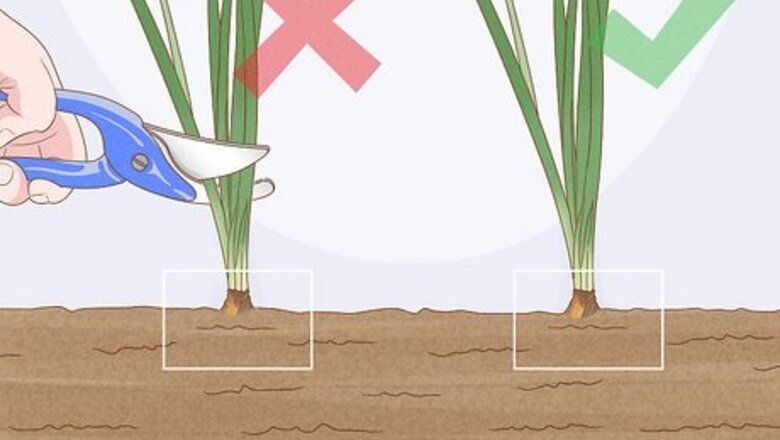
views
Preparing Bulbs for Transplant
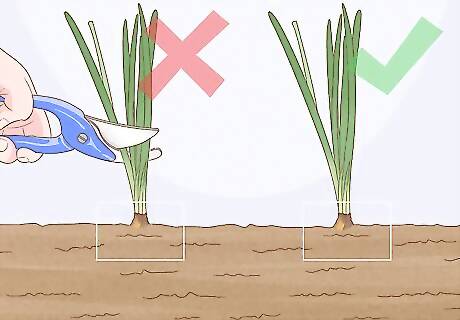
Transplant bulbs when they are visible to avoid damage. It’s always easiest to move bulbs when you know where they are, so gardeners usually try to transplant bulb plants when some of the plant is still visible above the ground. After flowering, the plant will focus on drawing in nourishment to sustain it over the winter. For this reason, you must avoid cutting green foliage as this deprives the plant of the ability to nourish itself and store energy from sunlight to see it through the winter.
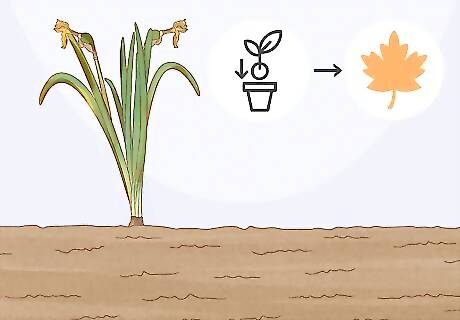
Transplant bulbs in the fall to achieve the best results. It’s always best to transplant bulbs in the fall after the foliage has withered away and is yellow. You can also move bulbs in the springtime but remember never to cut or damage any green shoots. If you move them in the spring take especial care not to damage the growing roots at this time.
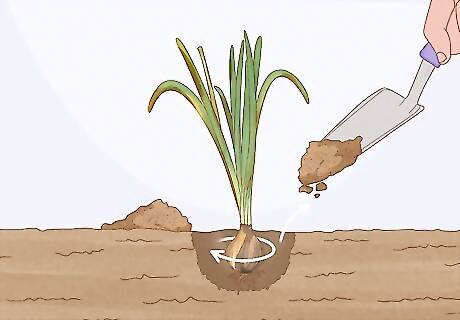
Dig up bulbs gently to ensure their health. The trick with digging up bulbs is to avoid damaging the main bulb and to preserve as much of the root structure as possible. This can be pretty hard to do. Gentle handling is always necessary when moving bulbs from place to place.
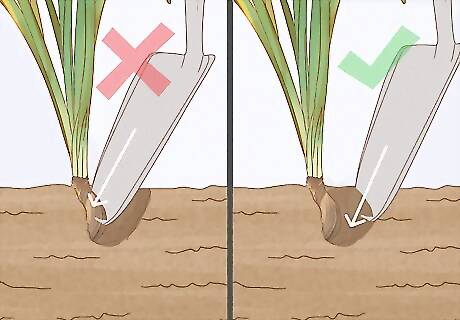
Know how deep your bulbs are to avoid damaging them. When you plant a bulb, you should always do so at a depth of several times the height of the bulb. So when it comes to digging them up, that will give you an idea of how deep you need to dig to avoid damaging the bulb with your spade. Three times the height of the bulb is the usual depth for planting. Also, bulbs often wriggle deeper into the ground over time, which may add to the depth they were initially planted at. For example, larger bulbs such as tulips or daffodils will usually be planted to a depth of about 8 inches (20.3 cm). It’s best to assume they are at 12 inches (30.5 cm) depth to be on the safe side.
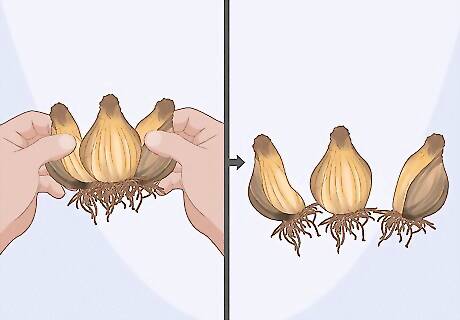
Separate your bulbs before transplantation. Bulb plants reproduce by dividing the original ‘parent’ bulb into several ‘daughter’ bulbs, known as ‘offsets’. This happens over a period of years. If you observe that your bulb has formed a clump of smaller bulbs, gently separate these with your fingers. The new bulbs can be planted separately and is a good way of increasing your bulb stock. This will also help avoid damaging neighboring bulbs by pulling apart their roots.
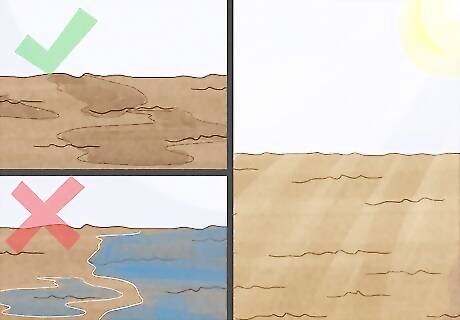
Plant your bulbs in sunny and well-drained soil to let them flourish. Bulbs are usually fairly easy plants to grow, but they will appreciate well-drained soil and a sunny site. Avoid planting bulbs any place where puddles form and don’t easily disperse after rainfall. Try squeezing a handful of damp earth. If it forms a sticky mass when squeezed, rather than crumbling, then your garden soil may be clay-heavy. If this is the case, it’s a good idea to incorporate lots of organic matter or grit into the soil to improve drainage. Do this well ahead of replanting the transplanted bulbs. Regardless of soil type, bulbs will appreciate plenty of organic matter such as well-rotted manure being incorporated at planting time.
Replanting Your Bulbs
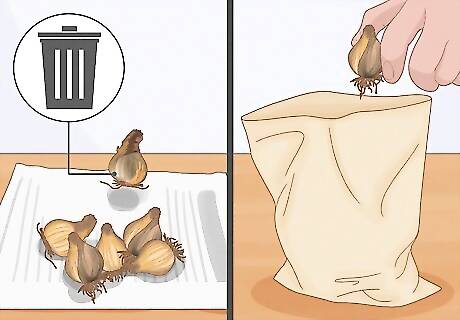
Store your bulbs properly to prevent rot. It’s always best to replant bulbs immediately after digging them up. If this really isn’t possible, you can store them for short periods. The trick is to avoid letting them rot. After lifting your bulbs, remove as much soil as is possible. Trim any straggly roots and pick off any flaking layers from the bulb itself. Discard any diseased or rotting bulbs. Lay the bulbs on a tray or other flat surface and allow to dry out for a day or two. Then, put the bulbs into a container of sawdust or paper bags with some peat moss. Some gardeners use net bags of the kind used to store oranges. The trick is to allow dry air to circulate to prevent the bulbs from getting damp and rotting. For the reason, it’s best not to overcrowd bulbs and prevent them from touching each other as this can lead to rot spreading.
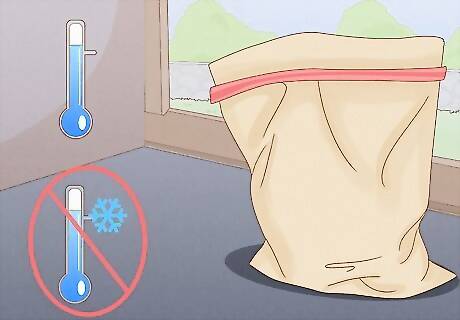
Keep your bulbs in a cool, dry place to ensure their longevity. Keep your stored bulbs in a cool dry place such as an unheated garden shed where temperatures don’t fall below freezing. Spring flowering bulbs are best planted in the autumn; summer flowering ones in spring. You will hear of some gardeners dusting bulbs with fungicide ahead of storing them. This is always a good idea but isn’t essential.
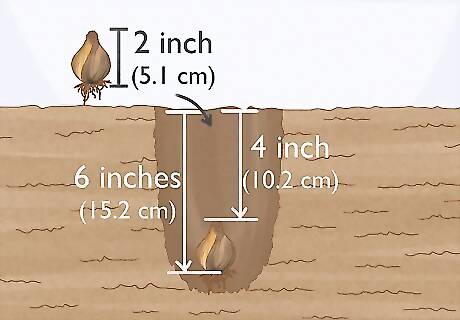
Plant your bulbs at a depth equivalent to 3 times its height to ensure good growth. Aim to plant your bulbs at a depth of about 3 times the bulb’s height. Bulbs should also be planted at least twice the width of the bulb apart. This means a 2 inch (5.1 cm) bulb should be planted 6 inches (15.2 cm) deep and at least 4 inches (10.2 cm) from its neighbor. It’s a good idea to add a handful of compost to the bottom of the hole for the bulb to sit on. Put the bulb in the hole with the pointed end facing upwards and fill the hole in. Water well and avoid treading down the earth with your foot as this can cause damage. Bulbs will do well planted under grass but remember not to mow the area over the bulbs until the foliage has withered away, usually in the late summer.
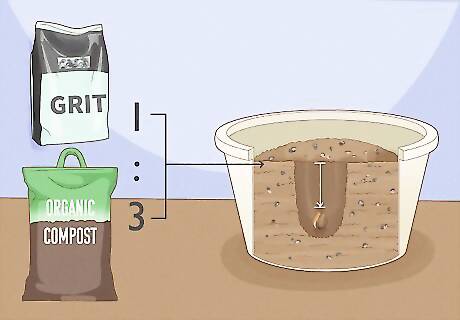
Take additional steps for bulbs planted in containers. Bulbs will tolerate being replanted in a container. It’s a good idea to incorporate some grit into the compost at a ratio of 1 part grit to about 3 parts compost, to encourage the proper growth of contain-planed bulbs. Container bulbs need to be planted at a depth of three times their size but they will tolerate more crowding than ground-planted bulbs – an inch of separation is fine. Avoid allowing the bulbs to touch. Feed container-planted bulbs regularly during the growing season (spring-summer).
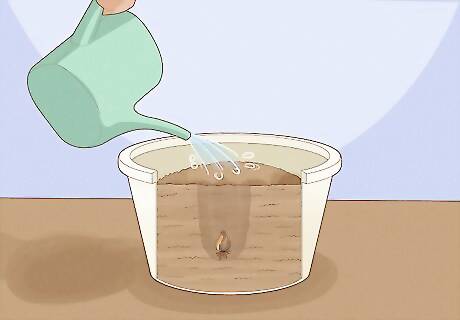
Water container-planted bulbs to keep them hydrated. Container-planted bulbs will need watering throughout the growing season – this usually means spring and summer. Once the foliage starts to die back, cut back on watering as this will help the plant go dormant. Don’t let the container dry out completely, even when the bulbs are dormant over winter.















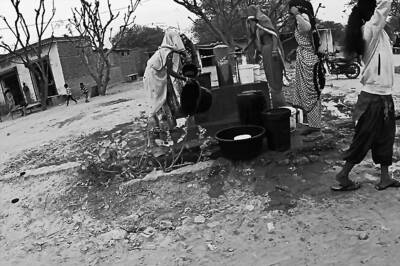



Comments
0 comment